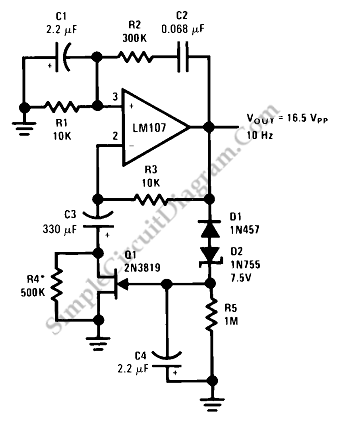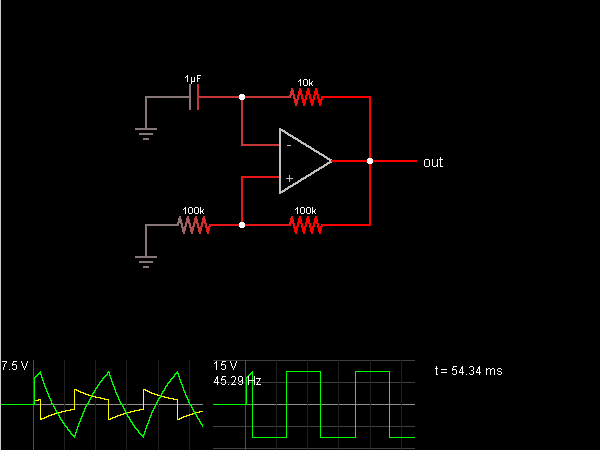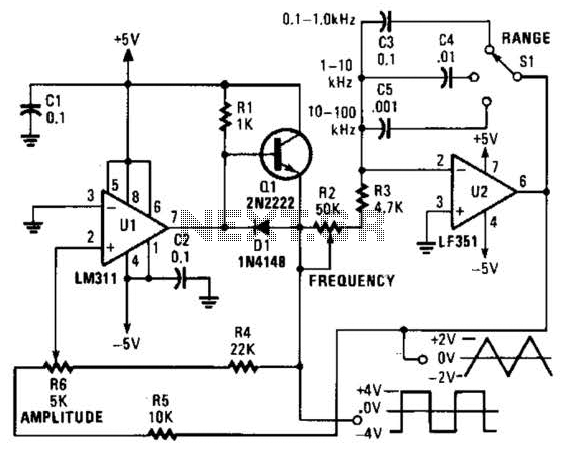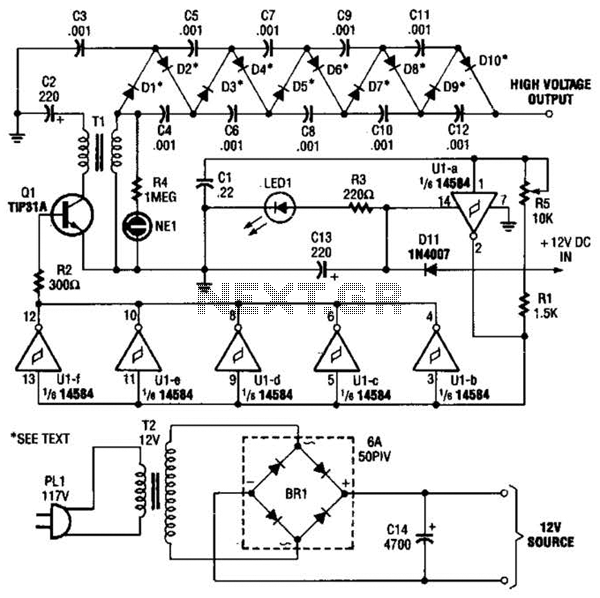
IC 4049 Square wave oscillator generator
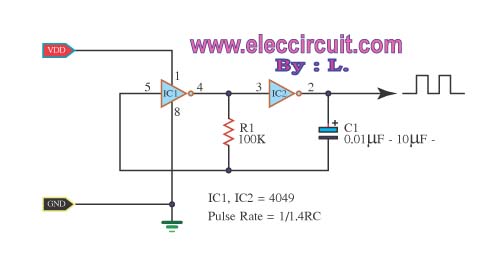
The inverter CMOS digital IC CD4049 is utilized to design a square wave oscillator generator.
The CD4049 is a hex inverting buffer, which means it contains six independent inverters that can be used to generate square wave signals. This IC operates on a wide voltage range, typically from 3V to 15V, making it versatile for various applications. The primary function of the CD4049 in the square wave oscillator circuit is to invert the input signal, allowing for the generation of a square wave output.
To design a square wave oscillator using the CD4049, a common approach is to implement a feedback configuration with external resistors and capacitors. The basic circuit consists of connecting one of the inverters in a feedback loop with a resistor (R) and a capacitor (C) connected to the input and output terminals. The values of R and C will determine the frequency of the oscillation, which can be calculated using the formula:
\[ f = \frac{1}{2 \pi R C} \]
where \( f \) is the frequency of the square wave.
The output waveform will alternate between high and low states, creating a square wave signal. The duty cycle of the output can also be adjusted by selecting appropriate resistor and capacitor values. In addition, the CD4049 can drive loads directly, making it suitable for interfacing with other digital circuits or components.
When designing the circuit, it is important to consider power supply decoupling to ensure stable operation, as well as the input and output characteristics of the IC to prevent distortion of the generated waveform. Proper layout and grounding techniques should also be employed to minimize noise and ensure reliable performance.
Overall, the CD4049 Hex Inverting Buffer IC is an effective component for creating square wave oscillators, providing flexibility and ease of implementation in various electronic applications.We can bring the inverter CMOS digital IC is CD4049 Hex Inverting Buffer IC, to design the Square wave oscillator generator.. 🔗 External reference
The CD4049 is a hex inverting buffer, which means it contains six independent inverters that can be used to generate square wave signals. This IC operates on a wide voltage range, typically from 3V to 15V, making it versatile for various applications. The primary function of the CD4049 in the square wave oscillator circuit is to invert the input signal, allowing for the generation of a square wave output.
To design a square wave oscillator using the CD4049, a common approach is to implement a feedback configuration with external resistors and capacitors. The basic circuit consists of connecting one of the inverters in a feedback loop with a resistor (R) and a capacitor (C) connected to the input and output terminals. The values of R and C will determine the frequency of the oscillation, which can be calculated using the formula:
\[ f = \frac{1}{2 \pi R C} \]
where \( f \) is the frequency of the square wave.
The output waveform will alternate between high and low states, creating a square wave signal. The duty cycle of the output can also be adjusted by selecting appropriate resistor and capacitor values. In addition, the CD4049 can drive loads directly, making it suitable for interfacing with other digital circuits or components.
When designing the circuit, it is important to consider power supply decoupling to ensure stable operation, as well as the input and output characteristics of the IC to prevent distortion of the generated waveform. Proper layout and grounding techniques should also be employed to minimize noise and ensure reliable performance.
Overall, the CD4049 Hex Inverting Buffer IC is an effective component for creating square wave oscillators, providing flexibility and ease of implementation in various electronic applications.We can bring the inverter CMOS digital IC is CD4049 Hex Inverting Buffer IC, to design the Square wave oscillator generator.. 🔗 External reference

